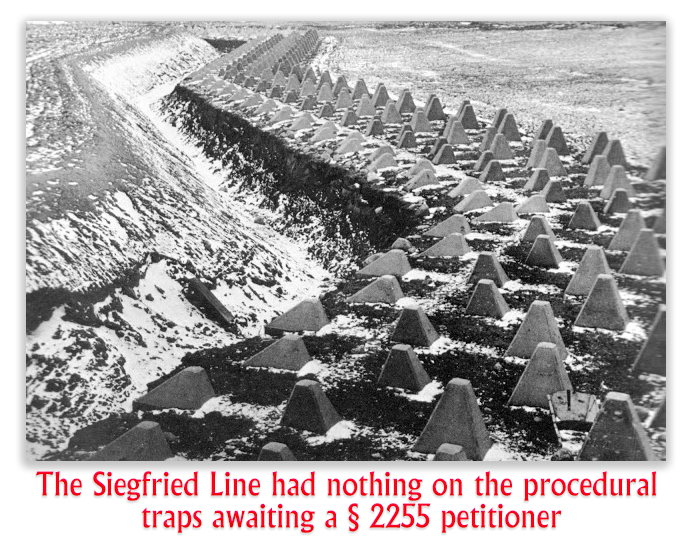We post news and comment on federal criminal justice issues, focused primarily on trial and post-conviction matters, legislative initiatives, and sentencing issues.

JUSTICE REQUIRES THAT THIS 60(b) NOT BE CALLED A DUCK

Ever since the Supreme Court’s 2005 Gonzalez v. Crosby decision, people who try to use F.R.Civ.P. 60(b) as a means of getting the denial of a 28 USC § 2255 post-conviction motion reconsidered have run into a brick wall. If the Rule 60(b) motion was challenging the underlying conviction at all rather than an infirmity in the 2255 proceeding (and they almost always are), the 60(b) was deemed to be a second 2255 motion and was kicked to the Court of Appeals (where it was almost always spiked).
But sometimes, justice’s cries are so loud that they are heard.
Roy West is serving a life sentence for a murder-for-hire conviction that now, even his sentencing judge describes like this:
Errors on the part of competent people — prosecutors, defense counsel, probation officers and, ultimately, this judge at the time of sentencing — resulted in the imposition on Roy of a sentence in violation of the law. Even skilled appellate counsel failed to raise the sentencing error.”
 Not that Roy hasn’t tried. He filed a 2255 years ago, arguing that “counsel was ineffective for failing to investigate a causation defense. The district court denied that motion, however, explaining incorrectly that death was ‘not an element of this offense.’ Years later, the district court, “now aware of the defect in West’s conviction” granted him compassionate release, “concluding that justice and faith in our judicial system demand correcting West’s sentence.” The 6th Circuit reversed, holding that compassionate release could not be used “as a vehicle for second or successive § 2255 motions.”
Not that Roy hasn’t tried. He filed a 2255 years ago, arguing that “counsel was ineffective for failing to investigate a causation defense. The district court denied that motion, however, explaining incorrectly that death was ‘not an element of this offense.’ Years later, the district court, “now aware of the defect in West’s conviction” granted him compassionate release, “concluding that justice and faith in our judicial system demand correcting West’s sentence.” The 6th Circuit reversed, holding that compassionate release could not be used “as a vehicle for second or successive § 2255 motions.”
Roy then filed a Rule 60(b) motion, asking that the 2255 be reopened. He focused on the “injustice to himself and the risk to public confidence in the judicial process that could accrue were his unconstitutional life sentence permitted to stand,” noting that the district court had already admitted that his sentence was wrong. The Government fought the 60(b), demanding that it be dismissed as a second 2255 regardless of the fact that James’ sentence was unlawful. The district court agreed and transferred it to the 6th Circuit.
Last week, the 6th Circuit decided that while the 60(b) may waddle, quack, and fly like a second 2255, justice demands that it not be deemed a second 2255.
“Rule 60(b) allows a party to seek relief from a final judgment, and request reopening of his case, in limited circumstances,” the Court said, citing Gonzalez v. Crosby. “The Rule enumerates five specific instances in which relief may be warranted, followed by a catchall covering “any other reason that justifies relief.” Relief under the catchall provision may be granted in ‘extraordinary circumstances’.”
Extraordinary circumstances “rarely occur in the habeas context,” the Circuit said, “but they are not unheard of. Courts considering whether extraordinary circumstances exist “may consider a wide range of factors,” including “the risk of injustice to the parties and the risk of undermining the public’s confidence in the judicial process.”
Roy’s arguments of injustice, of risk to public confidence, that the district court’s acknowledgment that the sentence was wrong and that the “Government’s conduct in this case raises the specter of fraud on the court,” were the extraordinary circumstances needed to make a Rule 60(b) motion appropriate despite Gonzalez v. Crosby. The case was sent back to the district court to decide the 60(b) motion.
In re W, Case No 23-1792, 2024 U.S. App. LEXIS 12826 (6th Cir. May 29, 2024)
Gonzalez v. Crosby, 545 U.S. 524, 125 S. Ct. 2641, 162 L. Ed. 2d 480 (2005)
– Thomas L. Root





